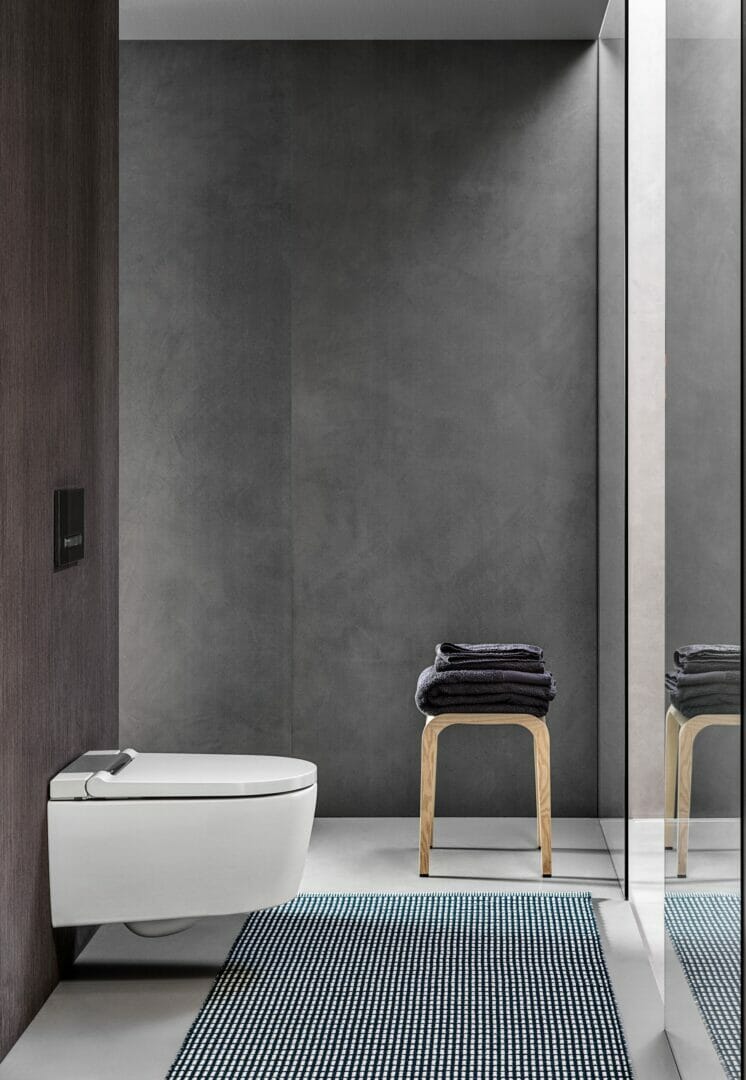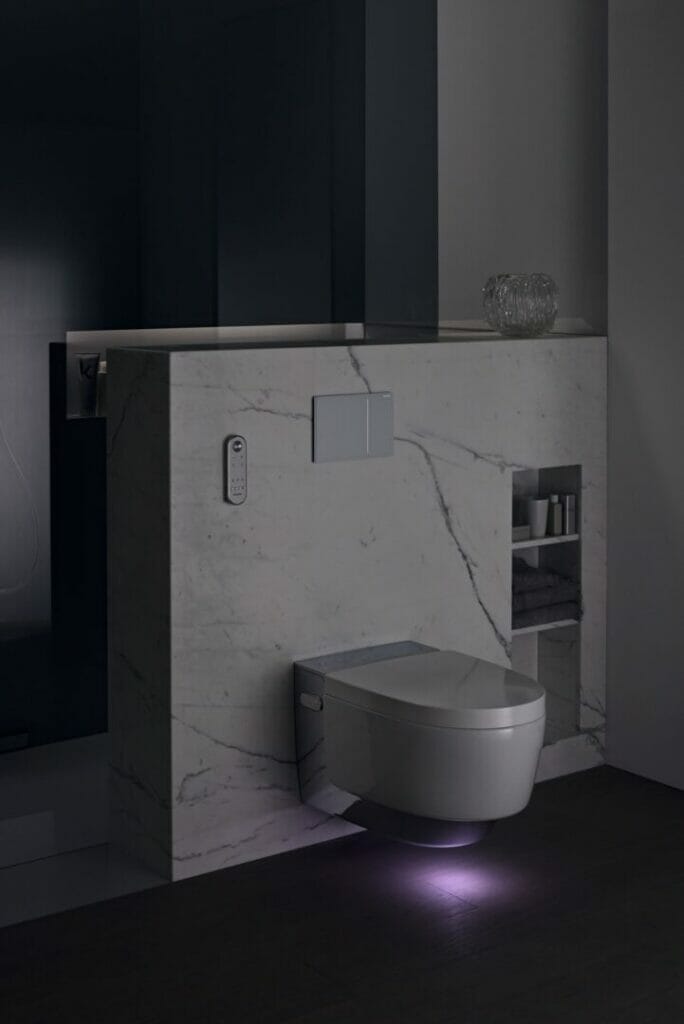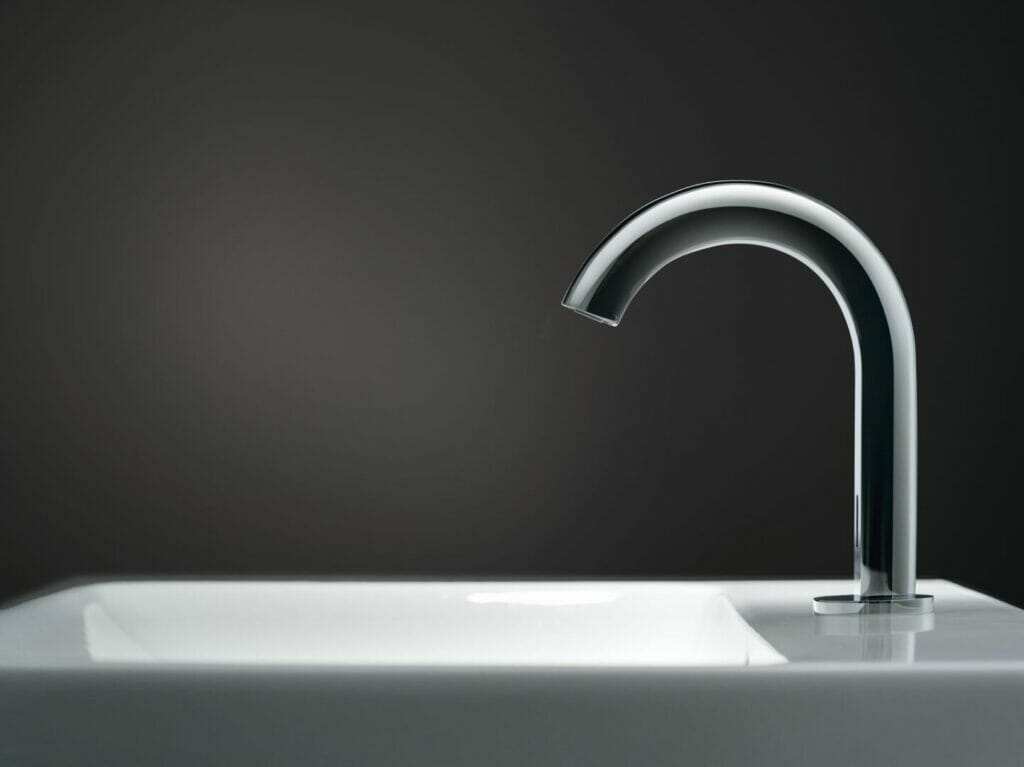
Today’s consumers have lived through some of the biggest technological changes in the home since the Industrial Revolution, embracing the consolidation of electrical appliances and gadgets into fewer, smaller and connected devices. Tapping into this potential is, of course, nothing new for housebuilders, but is there an opportunity for the sector to now think bigger? Bathroom manufacturer, Geberit, undertook a nationwide poll of UK homeowners to find out how they use technology in the home and their willingness to invest more in homes with smart solutions. In a new specialist report, Geberit has partnered with realtor Grant Bates to explore the findings in more detail and look at what the untapped potential of the bathroom space can offer housebuilders. Here, Sophie Weston at Geberit, explains.
The hotelisation of the home has had an enormous impact on the residential property market in recent times. The pandemic has, of course, played its part, with homes transformed into multi-functional spaces that are part gym, office and sanctuary. Indeed, we looked at the impact of this in our new report ‘Why Bathroom Technology is a Smart Choice for Housebuilders’and what this means for the expectations of today’s homebuyers. Grant Bates, realtor at Hamptons International and contributor to our report, sums it up neatly thus: “Leaving home is a choice, not a necessity for occupants.”
The end result is a buyer whose main consideration is prioritising day-to-day enjoyment of life and one willing to pay a ‘convenience premium’. As Grant points out, “…the practicality and convenience of the home are as important as the interior design.”

Smart expectations
Developers are, naturally, responding to these growing expectations and ensuring that homes are “… using the latest technology to accommodate a new world with a focus on self care, hygiene and flexible space.”
There is no doubt that some spaces do lend themselves to smart innovations more obviously than others. Think Bluetooth enabled white goods, smart fridges and touchless taps in the kitchen, for instance. Likewise, as Grant points out, many home office spaces are increasingly “akin to a professional YouTuber or influencers. Lighting, backdrops and high performance web cams are all a necessary part of any work from home set up as remote meetings replace the commute to the board room.”
In fact, when we commissioned a YouGov poll of 1,200 UK homeowners to seek their views on technology and smart devices in the home, the most popular spaces to see such innovations featured were the living room (70%), followed by the kitchen (34%) and home office (29%). Trailing behind at just 2% was the bathroom.
It’s clear, then, that some areas of the home are advancing more rapidly than others when it comes to technology, and the bathroom has evolved at a relatively slow pace. Perhaps this reflects the fact that housebuilders do not typically offer the same range of specification options for the bathroom as they might do for, say, the kitchen.
Yet, we must not underestimate the significance of the bathroom in our lives. For instance, research by Geberit in 2018 found that nearly three quarters of us struggle to find time to relax and, in the quest for some respite, the bathroom was the most popular place of escape. Homeowners are increasingly looking for a sanctuary in their home. If a spa is the brief from your buyers, could technology hold the key to unlocking this? And are your buyers willing to pay more?

Convenient investment
We put this question to our respondents. More than a third (35%) told us that they would be willing to pay more for a new home with technology and four in ten of those polled believed that there could be more technology in new homes.
There is clearly, therefore, a desire to see more innovations in new build and a willingness to pay the so-called ‘convenience premium’.
But let’s return for a moment to the bathroom, where only 2% of homeowners rely on smart devices or technology. The sanctuary of the home. Are housebuilders missing a vital opportunity here? “Bathrooms are critical to selling a hew home,” Grant points out. “For housebuilders there is a clear opportunity to improved saleability through bathroom design, specification and technological integration.”
Solutions
The good news for housebuilders is that bathroom technologies are generally fuss free solutions. When we asked our respondents what bathroom technology they would expect to find in a new build, odour extraction (39%) topped the list, followed by orientation lighting (34%). More than one in four (28%) expect to see touch-free flush plates and one in five (22%) believe that shower toilets should be a common feature.
Of course, such innovations are nothing new for manufacturers. Geberit’s AquaClean Mera shower toilet incorporates a number of such smart features from odour extraction and built-in orientation lighting to a warm air dryer and user recognition. Infra-red taps, meanwhile, such as Geberit’s Brenta and Piave products remove touchpoints in the space for a premium hygienic finish.
Lighting, too, can provide a simple way for housebuilders to add perceived value across projects. Geberit’s Option Plus and Acanto mirror cabinets have integrated USB ports for charging devices and LED bathroom mirrors can create discreet (and flattering!) lighting. Indeed we can expect to see manufacturers continue to innovate with future designs likely to display the news and weather or stream a favourite television show.
It’s worth remembering, however, that technology in the bathroom doesn’t always have to mean connectivity and automation. With new builds getting smaller, housebuilders must meet the challenge of creating attractive and practical bathrooms. Wall-hung toilets and sanitaryware create the illusion of space by lifting products from the floor and can open up greater design flexibility across projects.
Housebuilders
So what are housebuilders’ attitudes to this? We spoke to a number of individuals from across the sector to better understand their attitudes to technology. The results further highlight the appetite for continued growth in home technology solutions.
All our respondents agreed that UK new build homes could feature more technology and the vast majority intend to enhance their specification offer in the coming years. Drivers for doing so included differentiation from competitors, brand reputation and meeting buyer demand to help expediate sales. Most of the respondents do currently feature bathroom technologies and plan to install additional innovations in future projects, recognising the importance of technology in attracting buyers and adding value.
Conclusion
“Developers should be focusing on the wow factors, the principal suites, entertaining spaces and bathrooms,” advises Grant. “If any buyer is choosing between two similar schemes, they will opt for the product that makes their everyday life better and smart technology does just that.”
There is clearly a growing expectation from homeowners for more smart innovations in the home as personalisation and technology becoming more important to buyers. Perhaps the bathroom can provide the answer. It’s time for housebuilders to widen their scope to take advantage of buyer demand.
To download the report visit https://www.geberit.co.uk/technology
